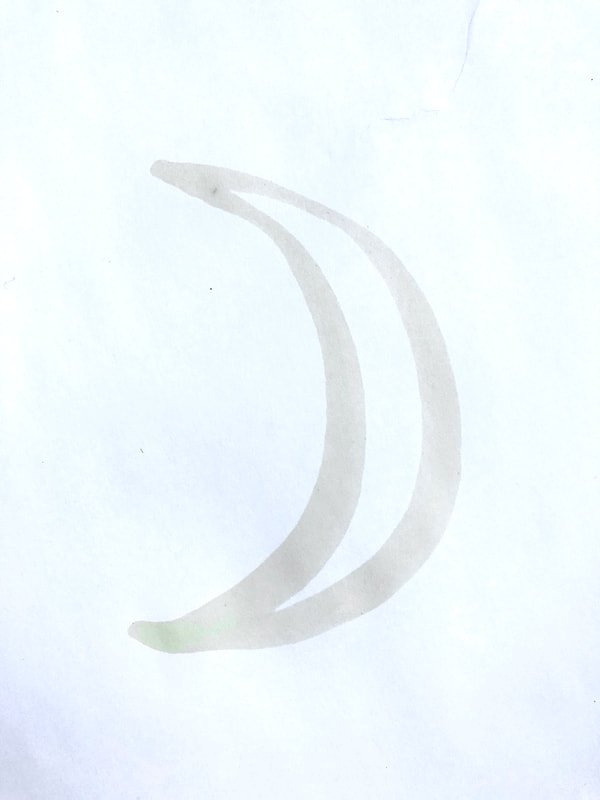|
Continuing with our series of short practices for connecting to each of the traditional planets on each of the days that they rule, today, Monday, we will focus on the Moon. The Moon is the nocturnal luminary. The Moon receives and reflects the light of the Sun. It signifies the body, emotions, feelings, and our basic instinctual needs for safety and security. The Moon is also associated with change and fluctuation as the light of the Moon changes throughout the lunation cycle, and as the ocean tides rise and fall and change in relation to the gravity of the Moon. The Moon is also associated with the mother or maternal figures. It rules the sign of Cancer and is exalted in the sign of Taurus. For today—or any Monday—you might make a small altar for the Moon with the things you have available. You can look to the list of correspondences below for the kinds of colors, stones, numbers, and tarot cards you might incorporate. Add things that you associate with the Moon—maybe white candles or white flowers, things that calm and soothe and make you feel safe, or objects that come to you from your matrilineal line. Once you build your altar, take some time to be with it as an aesthetic experience. Notice how being with this altar makes you feel. Drop your attention down into your body and observe what sensations arise as you sit with the objects that you’ve gathered for the Moon. If it’s nighttime and the skies are clear, depending on the Moon phase when you’re reading this, you might go outside and take a walk in the moonlight. See the Moon in the sky and feel that there’s actually nothing between you and the Moon other than open space. Whether you’re working with or without an altar, whether you are walking or sitting in the moonlight or whether you are indoors, I invite you to take some time to meditate with the Moon. It could be five minutes, ten minutes, or longer. Visualize the Moon in your mind’s eye, or visualize the glyph of the Moon. Notice what your body feels like sitting beneath the Moon or imagining the Moon. Remember or call up experiences in which you have felt safe and secure, where you felt your emotions were validated and supported. Consider visualizing or imagining moonlight filling your body—cool, luminous, glowing, and soft. In meditations like this, I also work with mantras coming from the yoga tradition. For working with the Moon, I use the mantra: “Om Sri Chandraya Namaha.” I use a mala and repeat the mantra 108 times. I also sometimes use mudra, described below. However you spend your time meditating on the Moon—repeating a mantra, visualizing or imagining moonlight throughout your body, recalling experiences that you associate with the Moon’s significations—tune in to the sensations that begin to accumulate. These could be physical, emotional, or they could be more subtle energetic shifts in your awareness. The practice here is for the Moon to become more than just an abstract symbol or something that you think of as “out there” in space. As you begin to notice what the Moon feels like within your body, this becomes a state that you can return to and work with in your magic, and how you understand the Moon astrologically—in your birth chart or in its transits—will begin to take on more embodied significance as well. Moon Day: Monday Number: 9 Colors: White, grey, and silver Metals: “silver and silver marcasite” (Picatrix) Stones: “seed pearls and part of crystal and blue stones and onyx and quartz” (Picatrix); I also strongly associate moonstone and selenite with the Moon Chakra: Ajña, the Third Eye Chakra Mantra: Om Sri Chandraya Namaha Mudra: I use Padma Mudra (Lotus Seal) in association with the Moon because it brings the lunar mount of both hands together at the base, and all ten fingers radiate out from that root. There is also a joint-hand Chandra Mudra that comes from Indian dance traditions. Both are pictured below. Tarot: The Moon (In the Golden Dawn tradition, the Moon was associated with the High Priestess card.) Sources: Kaitlin Coppock, “Planetary Magic: A Beginner’s Guide,” WellBeing Astrology 2020, editor Kelly Surtees, Universal Media Co, 2019: 92-95. Austin Coppock, “Intro to Planetary Magic,” https://austincoppock.com/shop/intro-to-planetary-magic-course/[online course]. Richard Fish and Ryan Kurczak, The Art and Science of Vedic Astrology: The Foundation Course (Asheville Vedic Astrology, 2012). Cain Carroll and Revital Carroll, Mudras of India (London: Singing Dragon, 2013). Gertrud Hirschi, Mudras: Yoga in your Hands (York Beach, Maine: Samuel Weiser, Inc, 2000). Thomas Ashley-Farrand, Healing Mantras: Using Sound Affirmations for Personal Power, Creativity, and Healing (New York: Ballantine Books, 1999). Richard Palmer, “Delving Into Tarot and Astrology in the Golden Dawn Tradition,” Biddy Tarot, https://www.biddytarot.com/tarot-astrology-golden-dawn/. Joe Rao, “When, Where and How to See the Planets in the 2019 Night Sky,” December 27, 2018, https://www.space.com/39240-when-to-see-planets-in-the-sky.html. If you missed the post on planetary magic practices for the Sun, you can find it here.
0 Comments
Your comment will be posted after it is approved.
Leave a Reply. |
AuthorMichael J. Morris is a witch, an astrologer, a tarot reader, an artist, a writer, and a teacher. Categories
All
Archives
April 2024
|
- Home
- About
- Bookings
- Offerings
- Events
- Tutoring and Mentorship
-
Downloads
- Transits and Transgender Liberation
- Feminist Astrology and the Moon
- Feminist Astrology: Mars, Violence, and War
- Celestial Kinship
- Introduction to Ritual Workshop + Beltane Ritual
- Minor Asteroids in the Birth Chart and Ritual
- Astrology Guide for 2022
- The Atomic Age, Urgency, Danger, and Kinship: Astrology and Climate Collapse
- Asteroids in Astrology: Nuance, Subtlety, and Direction
- Tarot Workshop with Michael J. Morris
- Astrology as an Artistic Practice: As It Is Made, So It Makes
- Astrology Guide for 2021
- Celestial Corporeality: Astrology and the Body
- Astrology Consultations as Feminist Praxis
- Embodying Astrological Archetypes
- Resources
- Blog
- Testimonials
- Policies
- Gratitude
Copyright © 2020







 RSS Feed
RSS Feed